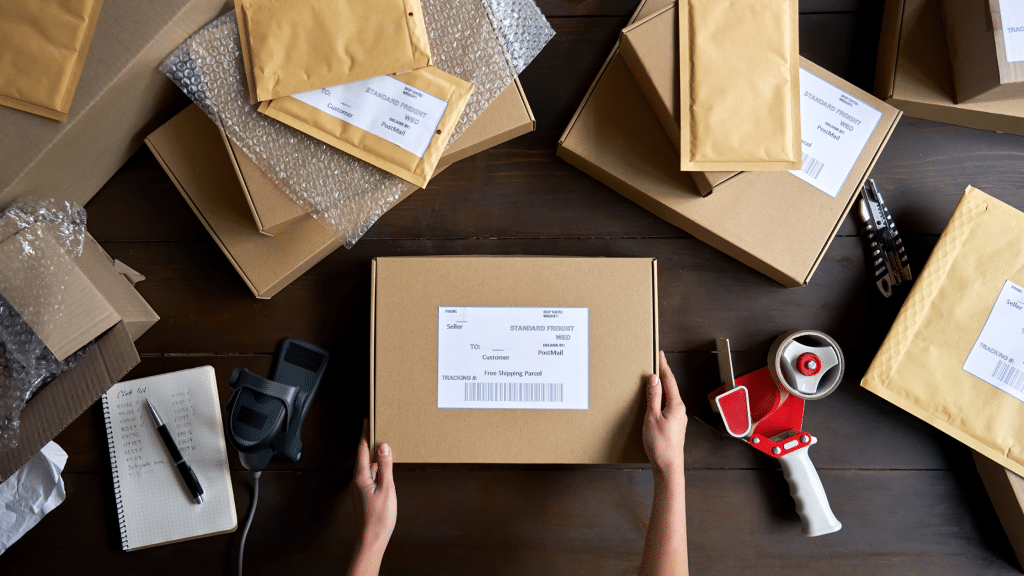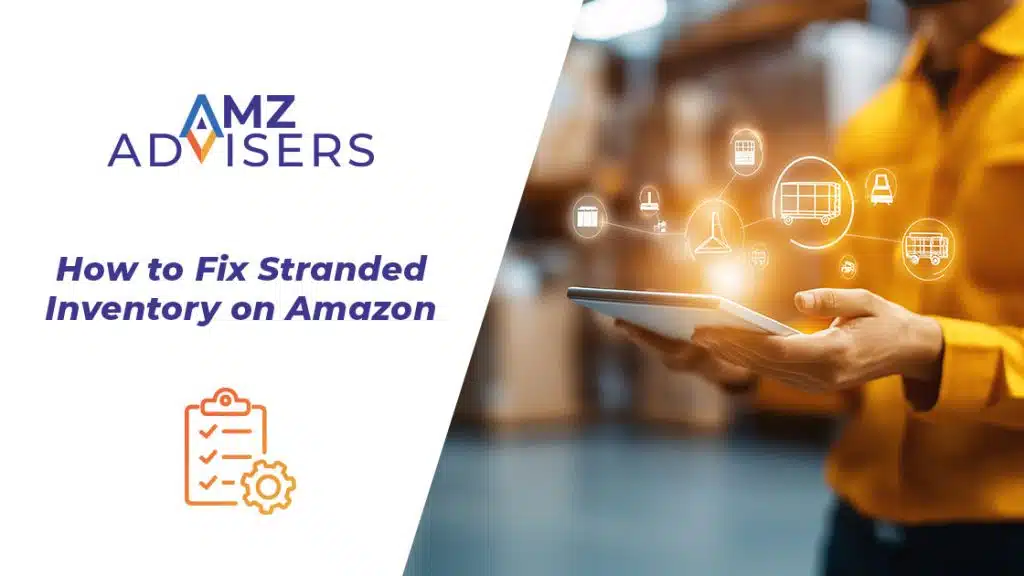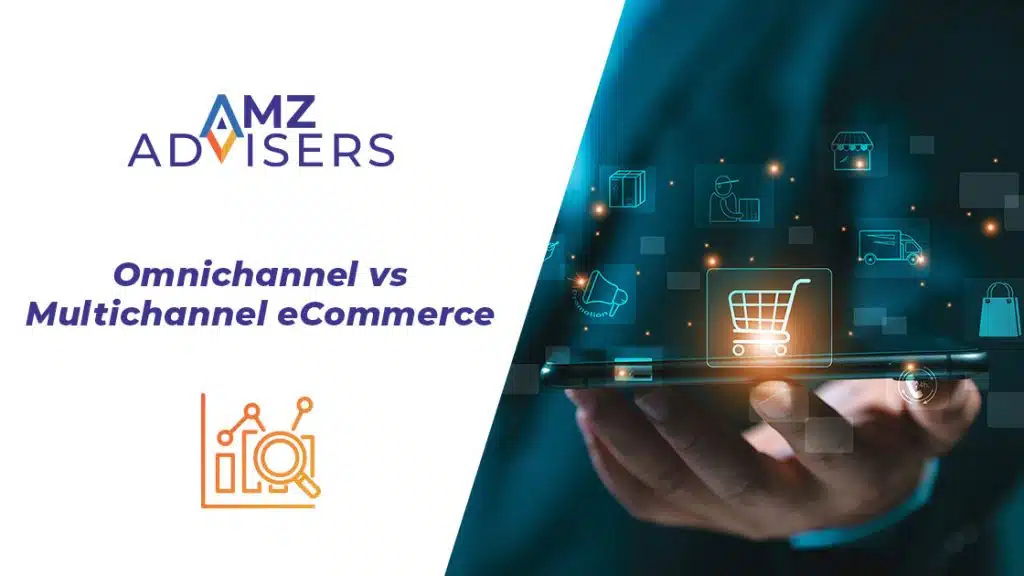Dropshipping is a big way for sellers to diversify their shipping options. But is Amazon Dropshipping Profitable?
According to JungleScout, 10% of sellers run an Amazon dropshipping business, meaning that this business model is not the most popular one on the platform. However, dropshipping on Amazon is a business model that requires no investment, so it may be worth looking at.
Below, we will demystify Amazon dropshipping, providing straightforward insights into how it works and what are the main aspects to consider before starting. We’ll cover everything from the basics to practical advice.
What is Amazon Dropshipping?
Dropshipping has been around for a long time, even before the internet! Back in the late 1800s and early 1900s, people could order stuff from catalogs instead of going to stores. Businesses like Montgomery Ward and Sears made this popular. They’d send out catalogs, people would pick what they wanted, and then the companies would ship it to them.
Nowadays, dropshipping has grown into a profitable, well-known industry that many giants are part of, including Amazon.
As an Amazon seller, your primary task is to upload your products onto your chosen platform or marketplace. From that point forward, the responsibility of packaging and delivering the products shifts to the wholesaler, supplier, or manufacturer.
Amazon Dropshipping emerges as the favored model, particularly for Fulfillment by Merchant (FBM) sellers. This preference stems from the fact that FBM sellers retain complete autonomy over the supply chain and logistics process.
Embracing the dropshipping model liberates brands from the burdens associated with storage and fulfillment logistics. Your focus remains squarely on driving sales and marketing initiatives, while the supplier efficiently manages the intricacies of order fulfillment and shipping.
This streamlined approach allows you to concentrate on scaling your business without being bogged down by operational complexities.
What are the Costs of Amazon Dropshipping?
Dropshipping on Amazon is a smart way to start selling without needing much money upfront. But is Amazon dropshipping profitable for sellers? Let’s break down the costs so you can see how it works and why it might be a good option for you.
First, there are two types of seller plans on Amazon: individual and pro.
- The individual plan is free to set up, but for every item you sell, Amazon takes a fee of $0.99.
- The Pro plan costs $39.99 per month but doesn’t charge per-item fees. This option might be better if you plan to sell a lot of items.
On top of the seller plan fees, there are also commission rates for dropshipping on Amazon. These rates range from 10% to 15%, depending on the category of the item you’re selling.
Despite these fees, dropshipping can still be profitable, with profit margins typically ranging from 10% to 30%.
It’s important to remember that Amazon also takes a 15% referral fee from the total revenue of each sale. For example, if your profit margin is 30%, Amazon will take 15% of the sale, leaving you with the rest.
So, why consider dropshipping on Amazon? One big reason is the massive audience. With more than 310 million active users, Amazon offers incredible exposure for your products, which can lead to significant sales.
In short, while there are fees involved, dropshipping on Amazon provides a low-cost way to start selling products online, with the potential for decent profits thanks to its vast customer base.

How does Amazon Dropshipping Work?
Let’s say that you decide to start selling on Amazon dropshipping. What does this look like at a practical level? Well, it is a pretty simple process, but it definitely involves a lot of work.
Create Your Amazon Seller Account
Start by signing up and setting your seller account on Amazon. If you need some help, this guide will help you with this process step by step.
Research and Choose Your Products
The marketplace features over 30 product categories, and you can select any that fits your brand and market base.
If you need some help with finding the right product for your audience and goals, you can use the Amazon product research tool to make things easier.
Here are some pointers to select profitable offers:
- Go for niche items with year-long market demand.
- Your products should also have low competition from other sellers.
- Take on highly marketable products, so you can boost conversions off Amazon.
- Stick to a $20-$35 pricing to collect a fair profit margin.
Related content: Product Sourcing for Ecommerce
Find Your Suppliers
Your supplier is what will determine the quality of your products, so it is not an easy decision to make. You want to choose the best Amazon distributor and make sure that it fits not only your expectations, but also what your clients want from you.
Here are a few useful channels to search for the best dropshippers in the market:
- AliExpress. This marketplace focuses on business-to-business (B2B) sales. Here, sellers can get in touch with suppliers ready to dropship their stock.
- Web search. Once you find a product to sell, find out who can supply it. Then, go to their webpage to learn more about them. This is also a great way to establish contact and begin negotiations.
- Trade Shows. Attend a few trade shows where you can meet suppliers face to face. It’s not as quick as a web search, but you’ll benefit from the personal touch.
Make sure to do your research and, before anything else, find out all you can about their working practices. For example quality control, stock management, shipping process, and payment options.
If you are about to choose a supplier that seems like the best option for you, don’t forget to take a look at what other people have to say about it. Also, try to get a letter of authentication once you set a deal. This is to let Amazon know that you are allowed to dropship from your chosen supplier.
List Products on Amazon
Now, let’s get to the fun part: creating your listings.
- Write Clear Titles. Create titles that clearly describe your product using keywords that customers might search for. Keep them short but informative.
- Describe Your Products Well. Write detailed descriptions that highlight the features and benefits of your products. Use bullet points to make it easy to read.
- Use Good Photos. Take high-quality photos of your products from different angles. Make sure they’re well-lit and show the product clearly.
- Set Your Prices. Research what similar products are selling for and set your prices competitively.
- Choose the Right Categories. Select the most relevant categories for your products so they show up in the right searches.
- Offer Fast Shipping. Provide reliable shipping options to attract customers. Consider using Fulfillment by Amazon for easier order fulfillment.
- Monitor Performance. Keep an eye on how your listings are doing and make adjustments as needed to improve sales.
Market Your Products
Use Amazon PPC (Pay-Per-Click) ads, enhanced brand content, and keyword optimization to promote your products within the Amazon ecosystem.
Receive Orders
When customers purchase products from your Amazon listings, you’ll receive notifications and payment through your seller account.
- Once you receive orders, forward the order details to your suppliers, including the customer’s shipping address and the purchased product.
- Your supplier will handle the packaging and shipping process, sending the product directly to your customer.
Provide Customer Support
The customer receives the product directly from the supplier. Since it’s shipped directly, they may not even realize it’s dropshipped.
Be prepared to offer customer support as needed, handling inquiries, issues, and returns. Positive customer experiences can lead to higher seller ratings and increased sales.
Heed the Amazon Dropshipping Policy
Before you kick-off, it’s key to understand the Amazon dropshipping policy:
- Always state to customers that you are the seller of record.
- Have the supplier identify you as the authentic seller in all product-related info. For example, invoices, packing slips, or external packages.
- Eliminate any mention of a third-party brand or supplier from all product-related info.
- Take responsibility for all product returns, from acceptance to processing.
- Comply with Amazon’s terms and policies of your seller agreement.
Some of the main things you should take care off if you want a non-problematic dropshipping collaboration with Amazon include:
- Make sure your suppliers can ship quickly. Amazon wants customers to get their orders fast, so delays can cause problems.
- Answer customers’ questions quickly and help them with any problems. Happy customers mean good reviews.
- Always know how much you have in stock.
- Fullfill orders fast and accurately.
In short, always ensure that you are noted as the seller of record. Plus, make sure that customers can’t tell when a package is dropshipped.
And never dropship products bought from another retailer, such as eBay or Walmart. That’s a big violation of Amazon’s policies.

The Pros and Cons of Amazon Dropshipping
Before deciding if Amazon dropshipping is the best business model for you, there are a lot of pros and cons you need to evaluate.
Pros for Dropshipping on Amazon
- Easy to set up. You can start dropshipping with very low upfront costs. Just create your Amazon account, search for quality and profitable items, and find a reliable supplier to work with.
- Storage space. Dropshipping frees you up from keeping inventory and permanent warehouses. You’ll cut down on overhead costs, such as shortage fees and shipping logistics.
- Automated & mobile. There’s no need to stay in a single location to run your dropshipping business. For example, you can manage your Amazon store from the mobile app, and set up supplier notifications for every customer order.
- Scalability. Experiment with selling different product types from your supplier. This is a great way to find unique market niches, without increasing logistic costs.
Cons for Dropshipping on Amazon
- Branding. Products may lack unique branding highlights, which makes it harder to stand out from the crowd. This could translate to low-profit margins, due to competitors offering similar items.
- Competition. Although not many Amazon sellers use it, dropshipping is still a competitive field. This is due to the low startup costs. Plus, variable prices from other sellers may cut into your profits.
- Quality control. The seller is out of the fulfillment and inspection processes. Thus, you can’t make sure that product packing and shipping are handled properly. That means buyers may receive late orders or even damaged products. This could lead to negative customer reviews.
- Supplier dependence. Stock, shipping, and delivery times depend on the supplier. You’ll have little say on logistics. So, if the supplier makes an error, your brand will take on the consequences.
Is Amazon Dropshipping Profitable?
Amazon dropshipping is one of the most appealing ways to make money in the marketplace, mostly because, unlike wholesale distribution and direct sales, it doesn’t require any initial investment.
But is Amazon Dropshipping profitable? In truth, making a profit with Amazon dropshipping isn’t easy. It depends on finding the right products, suppliers, and pricing strategies.
You have to do a lot of research to figure out what people want to buy and who you can trust to supply those products reliably. Plus, you need to set prices that cover your costs and still attract customers, while also considering the fees that Amazon charges for using their platform.
There are also rules and risks to be aware of. Amazon has strict guidelines, and if you don’t follow them, you could get in trouble or even have your account suspended. And because Amazon’s algorithms determine which products show up in searches, changes to those algorithms can affect your sales.
Final Thoughts
There’s really no easy anwser to the “is Amazon Dropshipping Profitable?” question. It can be a profitable business, but it’s not a get-rich-quick scheme. Dropshipping takes careful planning, research, and following the rules to make it work. It will also require a lot of trial and error, which can be frustrating for some sellers.
As with any other business model, the best you can do is:
- Do your homework and understand the business model
- Gather all the helpful resources you can
- Don’t overplan, start working and learn along the way
- Set realistic expectations that can help you stay consistent
Dropshipping requires a lot of work and patience if you want to see real results. This is why it is important for you to do your research and set realistic deadlines for how much time you will work on this before choosing a different path.
Remember that your long-term success will depend on a lot of factors, including your industry, knowledge, the product you choose, and your ability to market it.
Authors
 Esteban Muñoz is a content writer at AMZ Advisers, with several years’ experience in digital marketing and e-commerce. Esteban and the AMZ Advisers team have been able to achieve incredible growth on Amazon for their clients by optimizing and managing their accounts, and creating in-depth content marketing strategies.
Esteban Muñoz is a content writer at AMZ Advisers, with several years’ experience in digital marketing and e-commerce. Esteban and the AMZ Advisers team have been able to achieve incredible growth on Amazon for their clients by optimizing and managing their accounts, and creating in-depth content marketing strategies.
 Antonella Fleitas is a freelance content writer from Argentina. Antonella worked with many projects to create fact-based, evergreen content about science, language learning, and culture. Her main goal is to build a strong content foundation for her clients, based on meaningful stories that people can learn from.
Antonella Fleitas is a freelance content writer from Argentina. Antonella worked with many projects to create fact-based, evergreen content about science, language learning, and culture. Her main goal is to build a strong content foundation for her clients, based on meaningful stories that people can learn from.



